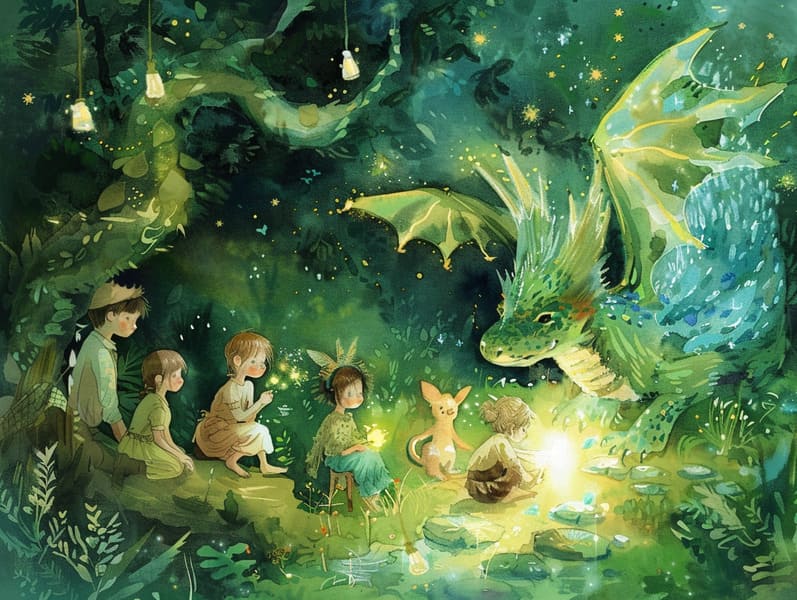The Journey of Fairy Tales and the Unending Wonder.
The Journey of Fairy Tales and the Unending Wonder.
Blog Article

Grimm's fairy tales have deep roots. These narratives have been spoken from one generation to the next well before they were ever transcribed. They arose from a variety of societies, including European traditions. They were initially passed along among grown-ups, often carrying themes and messages relevant to the societal norms and beliefs of the time.
The Brothers Grimm, Jacob and Wilhelm (the Grimm brothers), were among the first to collect many of these beloved stories. Their volume, "Grimm's Fables," included tales like "Cinderella," "The Story of Hansel and Gretel," and "Snow White," which have since become cornerstones in the world of traditional fairy tales. Similarly, Andersen's magical fairy tales, such as "The Story of the Little Mermaid," and "The Duckling that Could," have touched hearts worldwide, establishing their place in the pantheon of treasured fairy tales.
Despite their historical roots, classic fairy tales remain as meaningful as ever, especially as nighttime stories for kids. These enchanting tales are now available in multiple formats, including gorgeously illustrated books, captivating animations, and free fairy tales online.
Their ongoing significance can be ascribed to several whimsical characteristics:
Important Morals: Traditional fairy tales often offer important moral lessons. Narratives like "The Shepherd Boy and the Wolf" teach the merit of integrity, while "The Tale of the Tortoise and the Hare" demonstrate the benefits of steadfastness and humility. These stories offer the young clear distinctions between good and bad, helping to shape their moral compass in a subtle yet profound way.
Compassion and Knowledge: Old fairy tales frequently include personalities facing problems and hurdles, urging young listeners to empathize with their struggles and root for their triumphs. For instance, "Beauty and Her Beast" conveys the merit of seeing inner beauty to comprehend the inner being of a character, cultivating perception and perception.
Cultural Awareness: Many classic fairy tales are infused with the cultural contexts from which they sprang. Engaging with these stories can provide illuminating insights into different cultures, enhancing a sense of cultural awareness and perception.
Inventiveness and Imagination: The whimsical elements in old fairy tales—magical beings—generate children’s imaginations. These narratives bring readers to supernatural realms, kindling fantasy ideas and a sense of marvel that endures a lifetime.
Timeless fairy tales are not only enchanting but also didactic. They work as entrancing tools in enhancing various cognitive and emotional skills in young ones. When classic fairy tales are voiced, they develop linguistic abilities by showing new linguistic elements and sophisticated sentence structures. This practice also boosts auditory skills and mental focus, as little ones follow the this site story, enthusiastic to see what happens next.
Furthermore, exploring the themes and characters of fairy tales can sharpen analytical skills and thought processes. The young are instructed to recognize patterns, foresee events, and catch on to cause and effect. These reflections also support children verbalize their thoughts and feelings, strengthening their emotional intelligence.
In today’s online age, the abundance of online storybooks has made these narratives more accessible than ever. Online platforms and online apps make available huge assortments of timeless fairy tales that can be read or listened on anytime, anywhere. Fairy tales recited are particularly popular, presenting an enjoyable way for the young to relish these magical stories. Audiobooks and read-aloud videos bring characters and settings to life, often complemented by enchanting music and soundtracks that enhance the narrative experience.
The lasting allure of timeless fairy tales lies in their ability to change to today's society while retaining their fundamental ideas. Contemporary retellings of these fairy tales often highlight more representative figures and modern settings, making them meaningful to today’s audience. However, the core values of courage, empathy, and truth remain unchanged, continuing to strike a chord with young listeners of all ages.
Traditional fairy tales also offer a sense of protection and familiarity. They supply a well-ordered narrative with a evident beginning, middle, and end, often closing with the resolution of conflicts and the triumph of virtue over corruption. This reliability can be placating for the young, extending a sense of solidity in an fluid world.
Ancient fairy tales continue to enthrall and edify new generations, maintaining their splendor and value in modern society. As bedtime stories for kids, they allow a perfect blend of magic and knowledge, encouraging moral values, empathy, and creativity. The existence of internet fairy tales and the in demand status of fairy tales spoken ratify that these traditional tales remain available to new generations.
By upholding and disseminating these stories, we continue to cherish the rich tapestry of inventiveness and cultural heritage. Whether you are discovering a artistically illustrated book, seeing a internet collection, or listening on an audio story, the fascination of famous fairy tales is always within reach. These stories show us of the unwavering nature of storytelling and its ability to unite us across epochs and places.
Be it you are reading a gorgeously illustrated book, accessing a virtual library, or hearing an spoken story, the charm of timeless fairy tales is always within reach.
These tales remind us of the endless effect of tales and its ability to unify us across centuries and lands, creating a bond that delights and instructs alike.